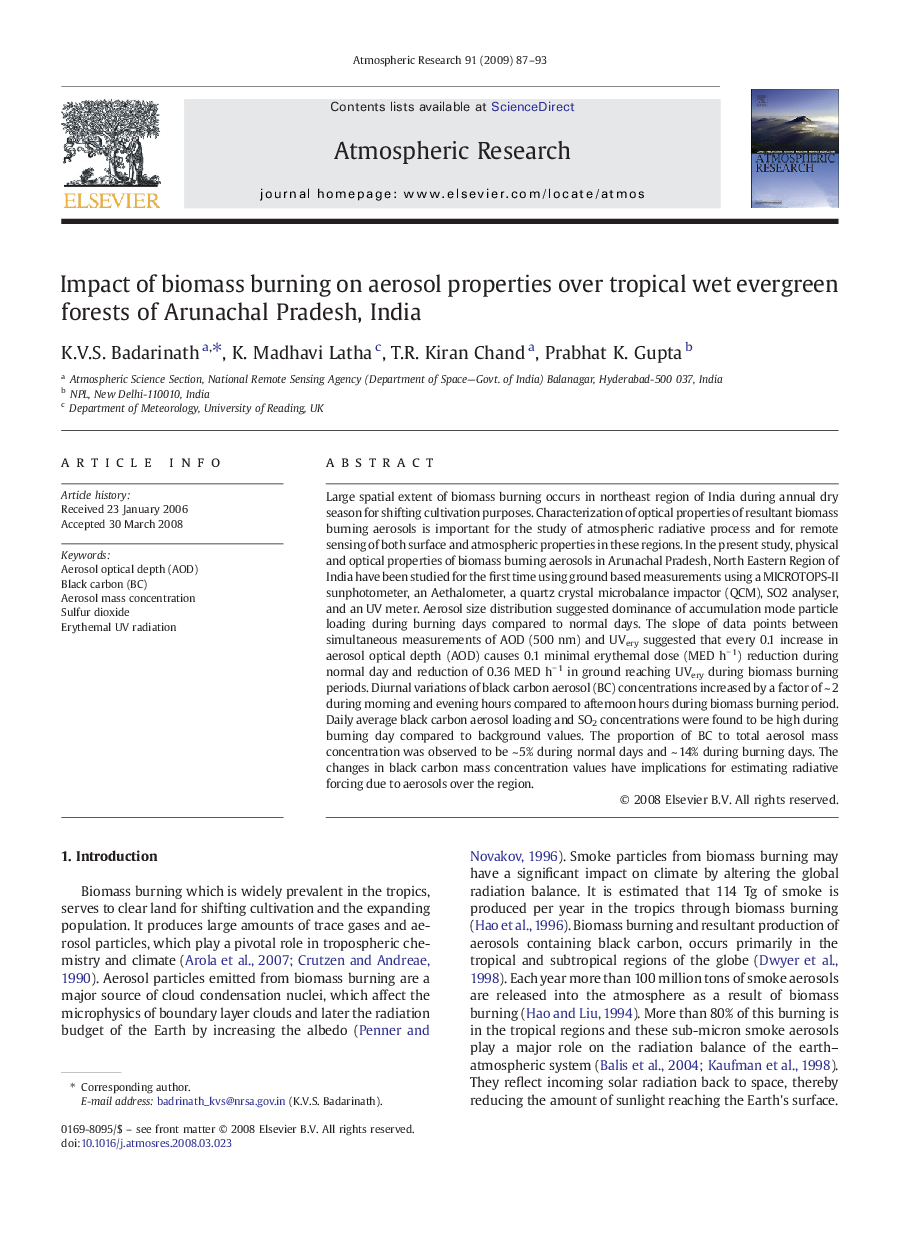| Article ID | Journal | Published Year | Pages | File Type |
|---|---|---|---|---|
| 4451072 | Atmospheric Research | 2009 | 7 Pages |
Abstract
Large spatial extent of biomass burning occurs in northeast region of India during annual dry season for shifting cultivation purposes. Characterization of optical properties of resultant biomass burning aerosols is important for the study of atmospheric radiative process and for remote sensing of both surface and atmospheric properties in these regions. In the present study, physical and optical properties of biomass burning aerosols in Arunachal Pradesh, North Eastern Region of India have been studied for the first time using ground based measurements using a MICROTOPS-II sunphotometer, an Aethalometer, a quartz crystal microbalance impactor (QCM), SO2 analyser, and an UV meter. Aerosol size distribution suggested dominance of accumulation mode particle loading during burning days compared to normal days. The slope of data points between simultaneous measurements of AOD (500 nm) and UVery suggested that every 0.1 increase in aerosol optical depth (AOD) causes 0.1 minimal erythemal dose (MED hâ 1) reduction during normal day and reduction of 0.36 MED hâ 1 in ground reaching UVery during biomass burning periods. Diurnal variations of black carbon aerosol (BC) concentrations increased by a factor of ~ 2 during morning and evening hours compared to afternoon hours during biomass burning period. Daily average black carbon aerosol loading and SO2 concentrations were found to be high during burning day compared to background values. The proportion of BC to total aerosol mass concentration was observed to be ~ 5% during normal days and ~ 14% during burning days. The changes in black carbon mass concentration values have implications for estimating radiative forcing due to aerosols over the region.
Related Topics
Physical Sciences and Engineering
Earth and Planetary Sciences
Atmospheric Science
Authors
K.V.S. Badarinath, K. Madhavi Latha, T.R. Kiran Chand, Prabhat K. Gupta,
